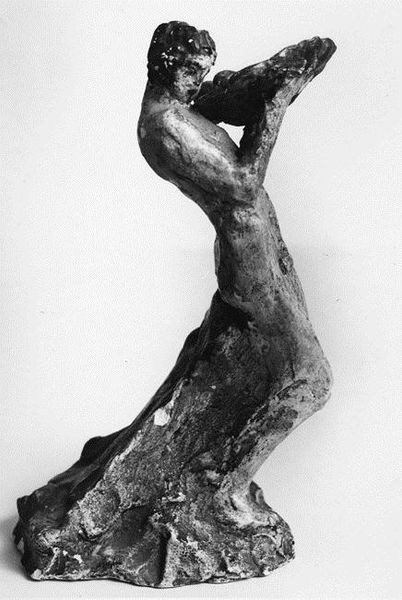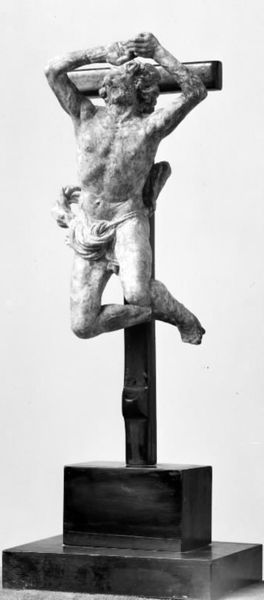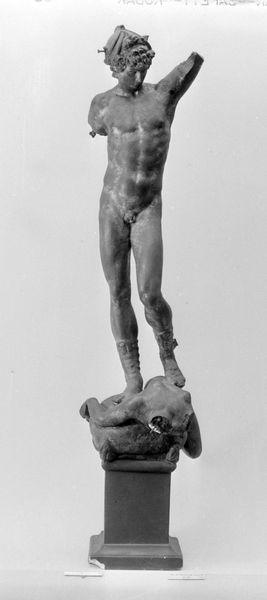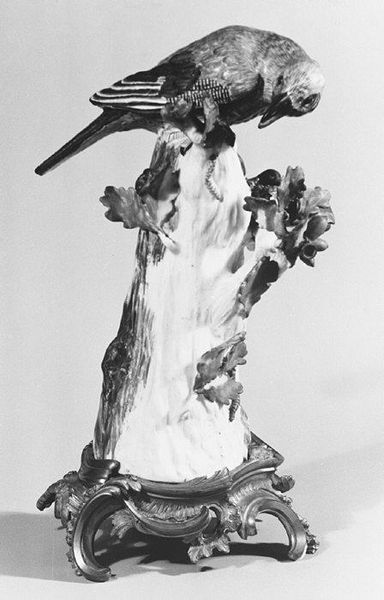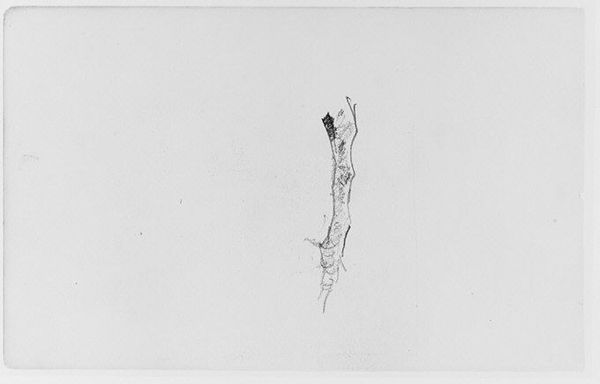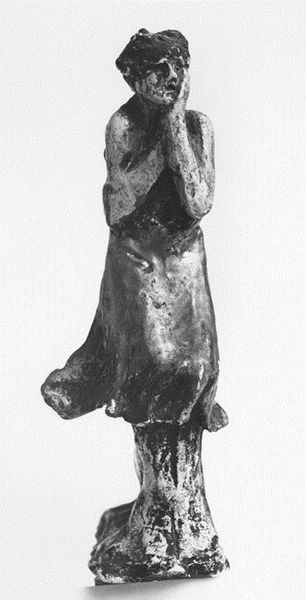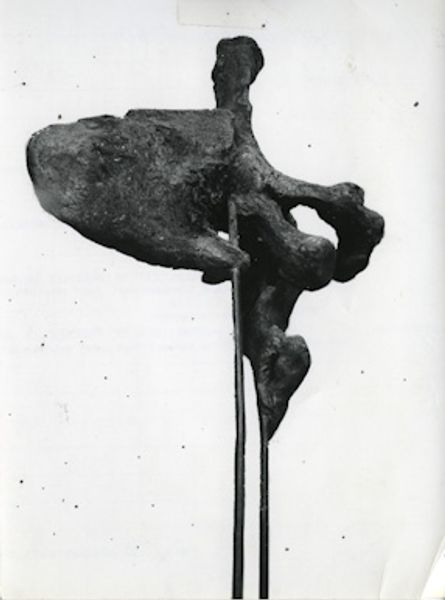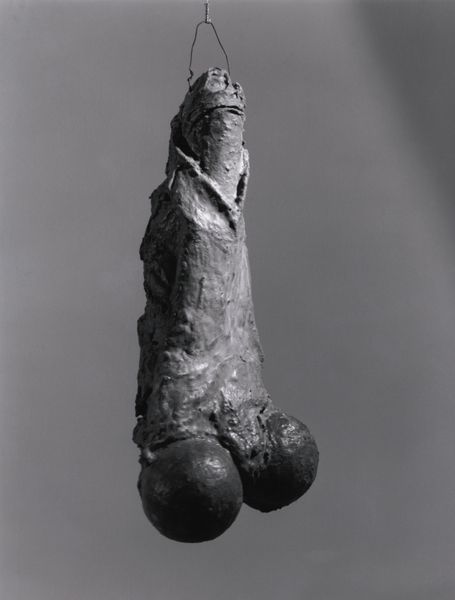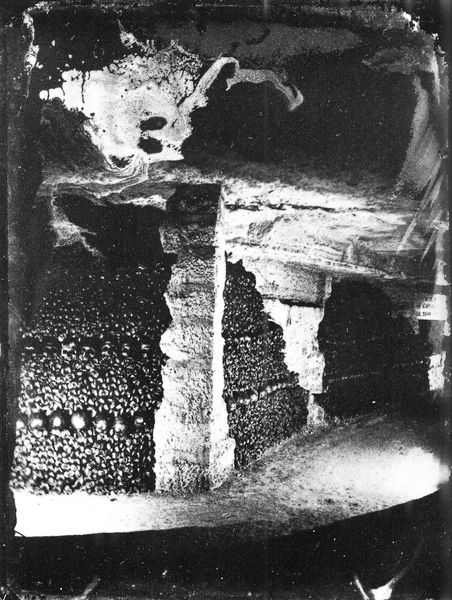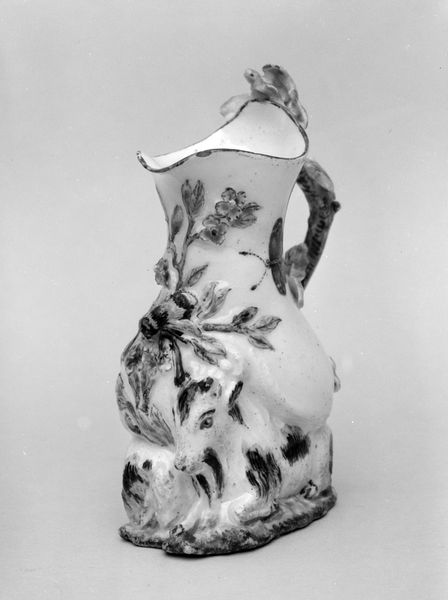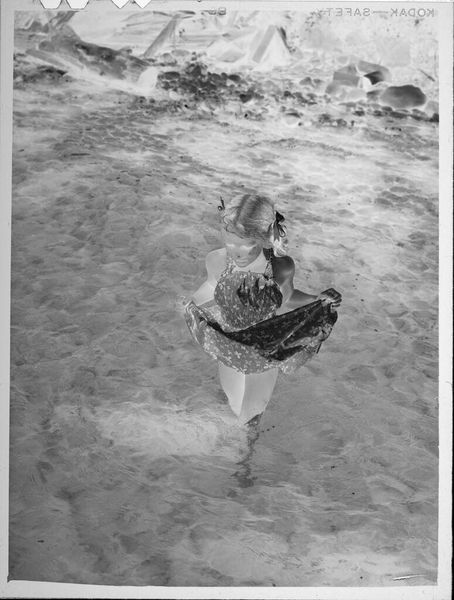
assemblage, metal, bronze, sculpture
#
abstract-expressionism
#
contemporary
#
assemblage
#
metal
#
sculpture
#
bronze
#
figuration
#
sculpture
#
black and white
#
monochrome
#
modernism
#
statue
#
monochrome
Copyright: Alina Szapocznikow,Fair Use
Editor: Right, let's talk about Alina Szapocznikow's "The Devil" from 1960. It’s this haunting assemblage of bronze and metal, quite small, but intensely present. The monochromatic finish adds a sense of timeless dread. It’s... unsettling, yet oddly beautiful. What strikes you most about it? Curator: Unsettling, yes! I see in this form a kind of perverse elegance, a gothic ruin, barely standing, almost defiant. Doesn't the grainy surface practically beg you to trace its contours, imagining what forces – maybe the sculptor's own torments – molded it so? Think about Poland in 1960 – the weight of history, the scars of war – does this “Devil” reflect some societal demon, a collective trauma she was wrestling with, or perhaps, exorcising? It also reminds me of Giacometti's attenuated figures, don't you think? What does the title, so direct and provocative, conjure for you? Editor: Well, "Devil" is so loaded. Initially, I see a kind of brokenness, something almost tragic, more fallen angel than malevolent force. Your Giacometti reference is spot-on, that same sense of fragility and endurance is certainly here! So, do you think she was deliberately challenging traditional depictions of evil? Curator: Precisely! She gives us a vulnerable demon, which to me, feels far more menacing than some horned beast of traditional iconography. A wounded devil carries more human truth, and perhaps reveals her commentary on powerlessness and the monstrous potential within ourselves. It's also intensely visceral; the tactile qualities beg to be explored, even though its title dares you not to touch! The very ambiguity is, I suspect, entirely deliberate! Editor: That really reframes how I see it. It’s not just about evil "out there," but something internal, almost a reflection of our own potential for darkness, our frailty! Curator: Indeed! Szapocznikow gifts us not a monument of horror, but an unsettling mirror reflecting a world – and selves – still grappling with the shades of the past. Now I see “The Devil”, not as evil incarnate, but as another form of broken angel; I wonder if Alina felt that angels could never break free. Thank you for sharing your views!
Comments
No comments
Be the first to comment and join the conversation on the ultimate creative platform.
